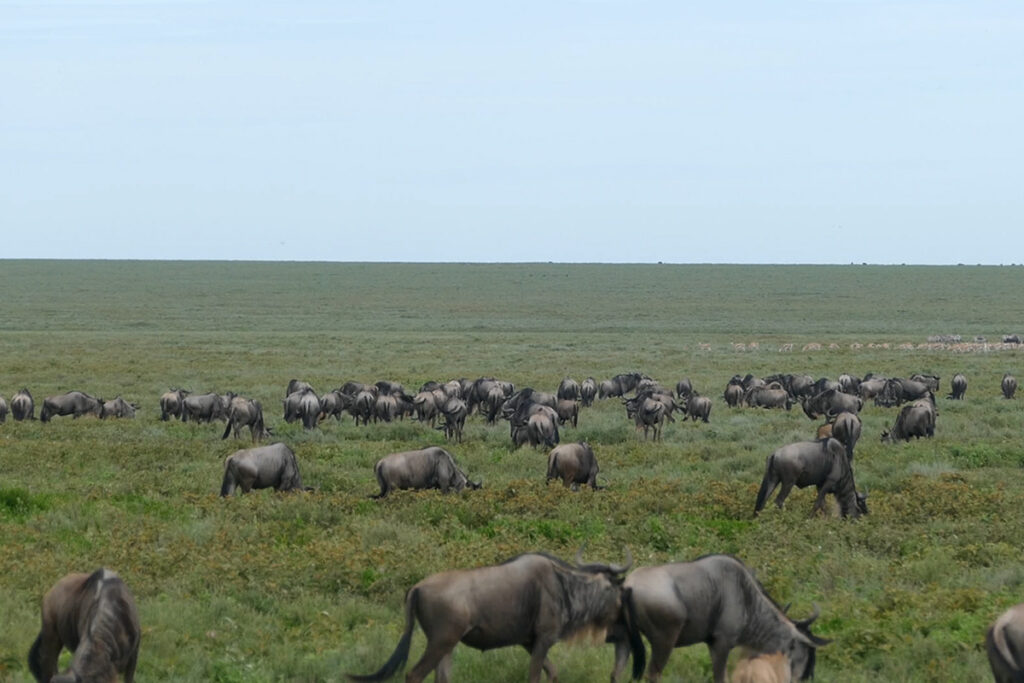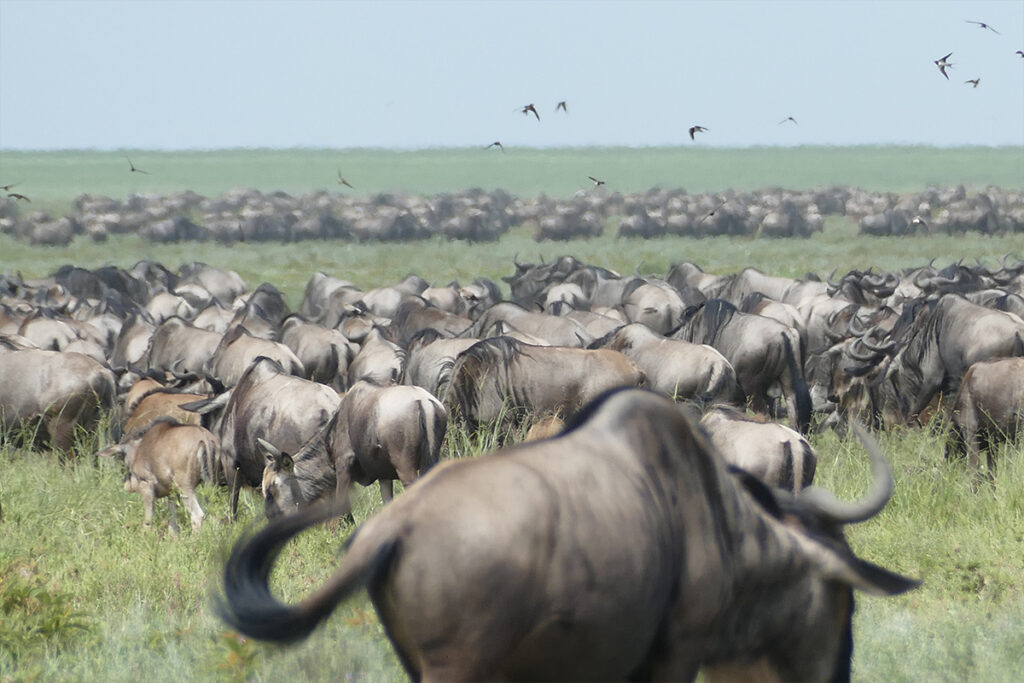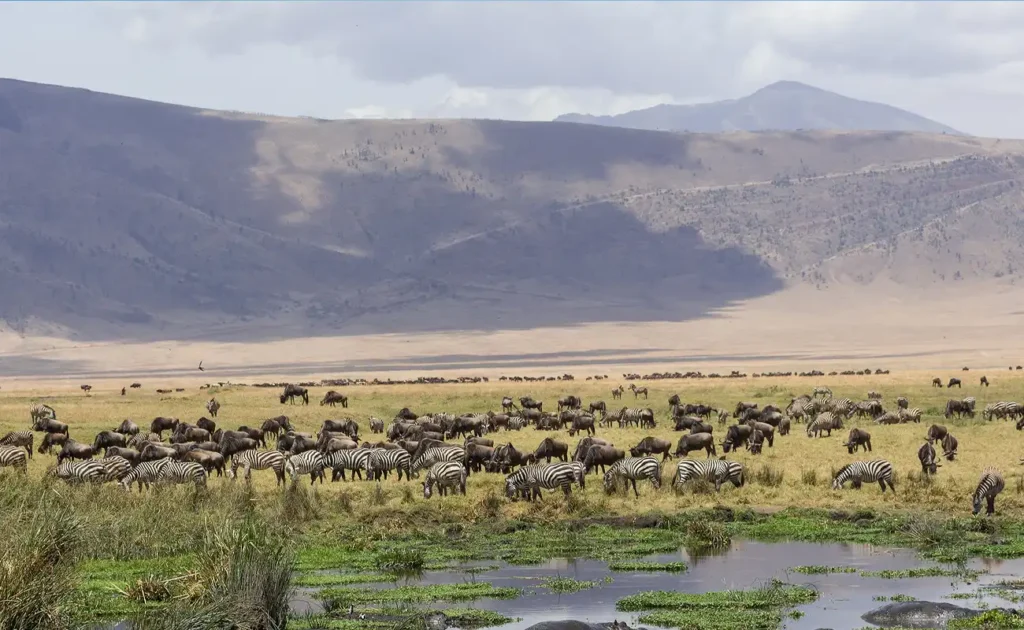Could you envision a dance that encodes the tales and rhythms of entire communities? The Haya traditional dances do precisely that, serving both as a cultural tapestry and an enchanting spectacle that captures the essence of Tanzanian heritage. Each performance is a vivid narrative, intricately woven with the vibrant sounds of traditional drums and melodic chants that beckon the audience to explore the unity between music, movement, and storytelling.
Rooted in the thick tapestry of Tanzanian history, the Haya dances are more than mere entertainment; they are cultural chronicles passed down through generations. The movements are often aligned with significant events, from harvests to ceremonial rites of passages. Fascinatingly, some studies suggest these dances can enhance community health and social cohesion, by fostering a collective identity among performers and spectators alike.

Haya Traditional Dances: Rhythms of Tanzania
The Haya traditional dances are a vibrant manifestation of Tanzania’s rich cultural heritage. These dances not only entertain but also communicate stories, rituals, and values deeply embedded in Haya society. Music is a central component, often featuring traditional instruments like the “emdrum,” which is a large drum made from cowhide. The rhythmic beats guide the dancers, whose movements are synchronized to tell a cohesive story. It’s fascinating to see how each dance differs depending on the occasion it is performed.
These dances are rooted in the history of the Haya people, who have resided near Lake Victoria for centuries. They have passed down these dances through generations, ensuring cultural traditions remain vibrant. According to this post, engaging in traditional dances positively affects community health and social cohesion. The communal aspect of dancing fosters a sense of unity and belonging among the participants. Dances also serve as a means to preserve historical events and communal experiences.
The attire worn during Haya traditional dances is equally significant. Dancers typically don colorful, elaborate costumes that include intricate beadwork and animal skins. These outfits are designed not just for aesthetic appeal but to signify various aspects of the Haya culture. For example, the type of clothing can indicate the dancer’s role within the performance. The vibrant colors and detailed designs make each dance a visual feast.
The preservation of these traditional dances is essential in an increasingly globalized world. Efforts are being made to ensure younger generations learn and appreciate these cultural practices. Here is the article that highlights different preservation methods, such as incorporating traditional dances into school curriculums and community events. Some modern adaptations of Haya dances blend contemporary styles with traditional elements. This fusion keeps the art form relevant while retaining its cultural significance.
Tradition dance -Tanzania
Exploring the Roots and Historical Significance
The roots of Haya traditional dances extend deep into the history of Tanzania, reflecting the narratives of the Haya people. These dances have been an integral part of their culture, serving as a bridge between the past and present. They are more than entertainment; they are a living archive of historical events and social norms. The importance of dance was evident in celebrations, religious ceremonies, and even during communal gatherings. It has always been a powerful way to convey shared values and collective memory.
Historically, the Haya developed their dances in part to mark significant occasions. For instance, dances were performed during weddings, harvest festivals, or when welcoming guests. Each dance would have a distinct purpose, often with specific music and costumes. This helped to ensure that each event was uniquely celebrated. The dances also played a role in education, imparting lessons through choreographed movements and songs.
Over time, the Haya dances have maintained their historical significance while adapting to modern contexts. Today, these dances are often showcased at cultural events and tourism activities to promote Haya culture. These events also provide a platform for preserving the dances and keeping them alive for future generations. They offer a glimpse into the traditions that shaped the community. By adapting dances for new audiences, the Haya ensure their culture remains vibrant and relevant.
Despite the challenges posed by modern assimilation, efforts to keep the dances alive continue. Schools in Haya communities encourage students to learn traditional dances from elders. Furthermore, cultural festivals feature dance competitions, attracting participants and audiences from different backgrounds. Such platforms not only preserve these cultural treasures but also open avenues for cultural exchange. They help people to connect with and learn from the rich history embodied in Haya dances.
Cultural Importance of Dance in Haya Communities
Dance holds a central place in Haya communities, serving as a vibrant expression of cultural identity. Through dance, the Haya people communicate their values, beliefs, and history to both young and old. Dances are often performed at social gatherings and ceremonies, uniting participants in a shared cultural experience. It allows people to reminisce about their past and uphold the traditions that have been passed down through generations. This communal activity strengthens social bonds and fosters a sense of belonging.
In the Haya community, dance is intertwined with celebrations marking key life events. Weddings, harvests, and rites of passage all feature traditional dances specific to the occasion. During these events, dance not only provides entertainment but also an opportunity to convey messages and teachings. It becomes a lively yet meaningful way to pass on traditions. These dances highlight the importance of family, community, and nature within Haya culture.
Moreover, dance serves an educational role among the Haya. Younger generations learn about their history and customs through movements and music. Dance is utilized as a teaching tool, making learning engaging and memorable. This aids in preserving the Haya culture by ensuring that young people understand and appreciate their heritage. As students learn these dances, they inherit valuable cultural knowledge.
In contemporary times, Haya dances also contribute to cultural exchange and tourism. Festivals and cultural exhibitions often feature these traditional dances, showcasing the beauty and depth of Haya culture. Visitors and locals alike can appreciate the skill and storytelling embodied in each performance. Such events not only entertain but also promote cultural appreciation and understanding. They serve as a bridge between the Haya community and the broader world, enhancing cultural visibility.
Typical Instruments and Attire Used in Haya Dances
The Haya people use a range of traditional instruments to create the vibrant sounds that accompany their dances. Drums are perhaps the most important, with the “emdrum” taking center stage. These large, powerful drums are crafted from cowhide and wood, providing deep, resonant beats that guide the dancers’ movements. Complementing the drums are other instruments such as rattles and hand claps, which add layers to the rhythm. Together, they create a rich tapestry of sound that energizes both dancers and spectators.
Another noteworthy instrument used in Haya dances is the whistle, which is often employed to signal changes in the dance routine. Its sharp, clear notes break through the rhythmic patterns, offering cues to dancers and musicians alike. The combination of whistles and drums produces a dynamic and engaging musical environment. This blend allows for spontaneity and excitement during performances. Such variety in instruments underscores the creativity and skill involved in Haya dance music.
The attire worn by Haya dancers is equally captivating, marked by its vibrant colors and intricate designs. Traditional outfits typically include skirts or dresses made from colorful fabric, often adorned with beads and shells. These embellishments not only add aesthetic appeal but also symbolic meaning. For example, beads can represent different aspects of Haya life, from agriculture to familial ties. The attire is designed to move gracefully with the dancer, enhancing the overall visual experience.
Headgear is another important element of the Haya dance costume. Dancers might wear hats or headbands decorated with feathers or beads, adding an extra layer of cultural symbolism. The headpieces serve both decorative and practical roles, helping to keep hair in place during energetic performances. These accessories highlight the dancer’s status and role within the performance. Their intricate designs reflect the creativity and craftsmanship of the Haya people.
Footwear also plays a role in completing the traditional Haya dance attire. Dancers often perform barefoot, allowing them to feel the rhythm through the ground. However, when shoes are worn, they are typically simple sandals or handmade slippers. This connection to the earth enhances the dancer’s ability to maintain rhythm. By incorporating traditional elements into footwear, the performance maintains authenticity while ensuring comfort.
Major Haya Dances and What They Represent
The Haya people have a variety of traditional dances, each with its distinct meaning and purpose. One notable dance is the “Ekizino,” performed during harvest festivals. This dance celebrates the abundance of the harvest and gives thanks to the deities for their blessings. Dancers move in a circle, symbolizing unity and the cyclical nature of life. The Ekizino highlights gratitude and the importance of community cooperation.
Another significant dance is the “Ekitagururo,” usually performed at weddings. This dance symbolizes marital union and the blending of two families. It incorporates graceful movements and synchronized steps to represent harmony and mutual respect. Traditionally, specific songs accompany the dance, offering blessings and well-wishes to the newlyweds. The Ekitagururo celebrates love and the start of a new chapter in life.
The “Ekinimbu” dance is often performed during rites of passage, such as initiations or coming-of-age ceremonies. This dance signifies the transition from one stage of life to another. It usually involves both elders and young members of the community, reinforcing the connection between generations. The Ekinimbu uses intricate footwork and gestures to convey the responsibilities and privileges of adulthood. It underscores the value of maturity and wisdom.
There are also dances like the “Embaga,” which is performed to welcome important guests or dignitaries. The Embaga is a dance of respect and hospitality, showcasing the cultural richness of the Haya people. Dancers wear their best attire and execute well-rehearsed moves to honor their guests. This dance involves elaborate group formations to symbolize the unity and pride of the community. The Embaga serves as a reminder of the Haya’s deep-rooted traditions of hospitality.
The “Omweso” dance is performed at funerals to honor the deceased and comfort the grieving. This dance expresses sorrow and remembrance but also celebrates the life and achievements of the departed. The slow, somber movements are meant to convey respect and mourning. It allows the community to come together in collective grief and reflection. The Omweso ensures that the memory of the deceased stays alive within the community.
Preservation Efforts and Modern Adaptations
The preservation of Haya traditional dances is crucial in ensuring cultural heritage is passed down to future generations. Communities actively involve elders in teaching young people these ancient dances. Schools play a role by incorporating dance lessons into their curricula, creating a structured environment for learning. Cultural festivals and events also serve as platforms for showcasing traditional dances, making them more accessible to younger audiences. These efforts ensure continuity and keep the Haya culture alive.
Modern adaptations of Haya dances are emerging as a way to keep the tradition relevant in today’s world. Choreographers blend traditional moves with contemporary styles, creating a fusion that appeals to broader audiences. This new approach not only maintains cultural significance but also attracts interest from those unfamiliar with Haya traditions. By incorporating elements like modern music and storytelling techniques, these adaptations provide a fresh take on classic dances. The fusion serves to both educate and entertain.
The introduction of technology has further enhanced the preservation of Haya dances. Performances are now recorded and shared on digital platforms, reaching audiences beyond Tanzania. Online tutorials and documentaries provide in-depth insights into the art form and its cultural implications. This digital presence helps maintain interest and awareness among people worldwide. Using technology ensures the dances remain accessible and appreciated.
Collaborations with cultural organizations and artists from different regions also support preservation efforts. These partnerships open avenues for cultural exchange and understanding, fostering respect for diverse traditions. Collaborative projects often lead to unique performances that celebrate the richness of Tanzanian culture. They encourage dialogue and learning, building a shared appreciation for the art of dance. Such initiatives offer exciting opportunities for cultural growth.
Despite the challenges posed by globalization, the Haya community remains committed to preserving their dance heritage. By blending tradition with innovation, they ensure the vitality and relevance of their cultural practices. Efforts to teach, share, and adapt these dances highlight the community’s dedication to their legacy. The ongoing efforts strengthen cultural pride and identity. These preservation strategies offer hope for the future of Haya dances.

Frequently Asked Questions
Haya dances hold cultural significance for the community while enriching Tanzanian heritage. Here are some common questions about these traditional dances and their impact.
1. What instruments are commonly used in Haya traditional dances?
The Haya traditional dances prominently feature drums, especially the “emdrum,” made from cowhide and wood. These drums provide deep beats that form the musical backbone for the dances. Besides drums, instruments like rattles and whistles are also used to enhance the rhythmic complexity. They create melodies that guide and energize the dancers throughout their performance.
These instruments are integral to the cultural authenticity and emotional expression of the dances. Each instrument adds its unique sound, helping convey stories and themes integral to the community. The combination of these instruments ensures a rich auditory experience for both performers and audiences. Their use in traditional settings also helps preserve the cultural heritage of the Haya people.
2. What are the main purposes of Haya dances in their community?
Haya dances play various roles, from celebrating important life events to preserving cultural practices. Events like weddings, harvests, and rites of passage feature these dances to mark significance. For instance, the Ekizino dance during harvest festivals expresses gratitude and fosters community spirit. Dance serves as both celebration and communication medium.
These performances are also educational tools, teaching younger generations about their culture and values. Through dance, historical stories are passed down, enabling continuity of traditions. The communal aspect strengthens social bonds and fosters identity. Dancing together, the Haya people maintain cultural unity and reinforce a shared sense of belonging.
3. How are Haya dances adapted in modern times?
Haya dances have evolved with time, incorporating modern elements like contemporary music styles. This fusion keeps the tradition alive and resonates with wider audiences. Choreographers creatively blend traditional and modern elements, making these dances engaging without losing cultural essence. This adaptability helps maintain relevance and encourages youth participation.
Technology has also played a role, with performances shared online for greater accessibility. Social media and digital platforms allow these dances to reach global audiences, preserving the Haya culture. Such visibility fosters international appreciation and cultural exchange. The fusion of tradition and innovation ensures lasting resonance.
4. How do Haya traditional outfits enhance dance performances?
The attire worn during Haya dances features vibrant colors and intricate designs, adding visual appeal. Traditionally crafted from colorful fabrics embellished with beads and shells, outfits complement the dance movements. These costumes symbolize various cultural aspects, highlighting elements like family and community. They enhance storytelling by reflecting themes conveyed in the performance.
Costumes also help dancers connect with their roots and express cultural pride. Through attire, the rich heritage is symbolized, making the performance a comprehensive cultural representation. Creativity in design showcases the craftsmanship of the Haya people. Outfits become an integral part of preserving and showcasing their identity.
5. Why is it important to preserve Haya traditional dances?
Preserving Haya dances safeguards an essential part of Tanzania’s cultural heritage for future generations. These dances hold historical significance, embedding stories and values that define the Haya people. Through education and festivals, these traditions are maintained, enriching cultural diversity. This preservation ensures that the Haya culture remains vibrant and revered.
Cultural institutions and community initiatives play vital roles in teaching dances to young people. These efforts create awareness and appreciation, promoting cultural pride within and beyond the community. By safeguarding Haya dances, the authenticity of the culture is preserved, fostering a sense of identity. The continuity ensures that cultural roots are never forgotten.
Haya Traditional dance from Tanzania #traditional #traditionaldance
Conclusion
Haya traditional dances, rich in cultural heritage, play a pivotal role in expressing the identity and values of the community. Through vibrant movements and music, they convey stories that transcend generations. These dances not only celebrate cultural milestones but also unite the community in shared celebrations and commemorations.
Efforts to preserve and adapt these dances ensure their continued relevance in modern society. By blending tradition with contemporary elements, the Haya maintain their cultural authenticity while engaging new audiences. This delicate balance strengthens cultural pride and enriches Tanzania’s diverse heritage, setting a foundation for future generations.



